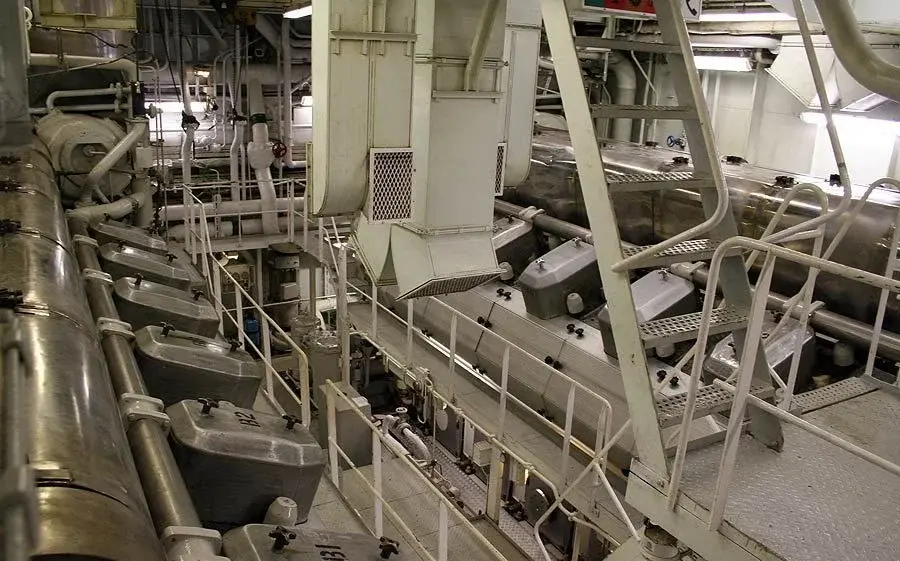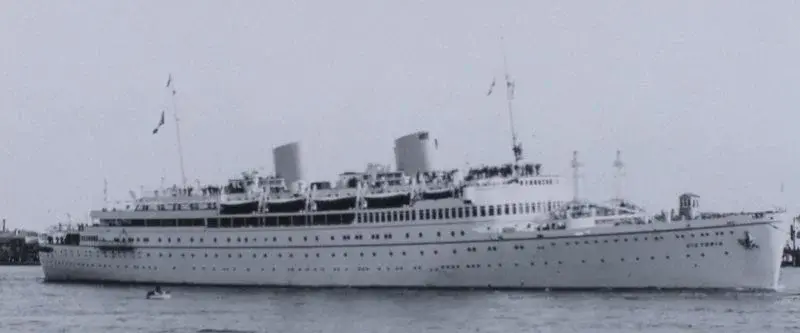the tragic affair of the concord and the long discussion that we have faced in this 3ad, has made me rethink the great traditions of our merchant navy and with what ease they can be "forgotten" for the faciloneria of an improvised captain, for shady trade agreements in beards to the most basic norms of common sense (before of security), for the combination of "experts" that quarrel.
but the merchant navy is not represented by this episode, but it has its roots in a culture that today seems lost and forgotten, suffocated as it is from business.
the history of the ships from cruise begins with the progressive development of the means of navigation that led from the end of the 800 and at the beginning of the next century, to the creation of ships increasingly larger, able to reach high levels of comfort, fed by the myth of speed. so the binomy “viaggio-crociera” was created.
and just in the name of the speed was born competition for the conquest of the “blue tape” that is the speed record on the routes of the Atlantic north that triggered the competition between the companies of navigation. it was immediately evident in fact how the passengers would prefer to sail with the ship or at least, with units of the winning company of the challenge. the Norddeutscher lioyd, which had won the trophy in 1897 with the “kaiser wilhelm der grosse” from 14.349 tsl, took place 24% of the passengers transported to new york despite the other companies and this success, convinced her to build the “deutschland” from 16.500 t and beyond 24 knots of speed. the trophy remained in the hands of the Germans and with it a large share of the market.
but the competition did not only favor the speed of the ships but also their size. Thus the “sea fighters” were born, which in 1927 reached 34,800 t. after the great war, restrictions on the immigration of america were found on the traffic that had a large contraction. the companies had to revise the quotas assigned to the classes of passengers and created the "tourist class" for users, while reducing the number of places for the third class. the cruise became a luxury to flaunt.
in this new scenario the Italian fleet played an important role, leading up to high efficiency and consideration in the 1930s. the elegance and comfort guaranteed by our ships became proverbial and imposed on the world market. In 1915 we had 36 transatlantics whose average size exceeded 5,000 t. but in the following decade, thanks to the support of the government, there was a considerable increase in the merchant fleet. in 1922 the “red count” entered service from 18,000 and in 23 the “duilio” from 24,300. it was a ship with innovative safety features, the furniture was luxurious and to increase the comfort was equipped with stabilizing ballasts.
progressively entered service the “Cesare Law” from 21.657, built in land, the “green count”, the “white count” and the “big count”. then it was the turn of the remarkable “augustus” and “roma” from over 32,000, of the “saturnia”, of the “vulcania”, “orazio” and “virgilio” and many others that raised the prestige of the nation all over the world.
now that it had been reached a very good level, it was necessary to point to excellence so in ’32 the “rex” from well 51.062 t and the following year the “Savoy Count”, slightly smaller but first passenger ship equipped with plant of sperry stabilization with three gyroscopes. the rex, with its more than 27 knots, on August 16, 1933 the blue ribbon was added, keeping it for two years until it was won by the huge “normandie” from 79,280 and 29,9 knots. the last great and luxurious ships of the time were the “oceania” and the “neptunia” but contemporary to the rex, was designed the “victoria”, a splendid realization of naval architecture. the luxurious furnishings with ten “suites” of true luxury, all white with the yellow fumaioli, was defined “the white arrow” by the Anglo-Saxon press and “colum of the oceans” by the Arabs who admired it while crossing the red sea.
Unfortunately the war does not make discounts to anyone and the white dove was used to transport troops to the north of Africa. was attacked and sunk by British aircraft off the sirte, bringing with it 354 men on 1400 boards.
the war decimated our fleet of passengers questioning its survival but traditions and experience proved stronger and allowed recovery even after the war. the new “augustus”, “victoria” and “julio cesare”, followed by the “cristoforo colombo”, the “guglielmo marconi” and the “galileo galilei”, the “leonardo da Vinci” from 33.340 t that replaced the unfortunate “andrea doria” sunk in 1956. so came to the sumptuous “myelangelo” and “raffaello” from 46,000 t.; 276 meters long, 31 wide and with a speed of 29 knots. true floating cities, fascinating, luxurious, rich in recreations and attractions, authentic queens of the cruises. their sale to a Middle Eastern country represented the sunset of this second phase of splendor for our merchant navy.
but incredibly we have witnessed a third revival with the entry into service of real “moisters” of the shipbuilding industry such as the “joying basket”, the “Romantic Coast”, the “costa victory” and the “costa concordia” miseramente assumed as protagonist in the incredible shipwreck of the lily. it is objected that these floating cities are not even comparable to previous buildings. are “kitsch”, brazen, inelegant. It is true, but a comparison is improposable, different epochs, different markets, different realities. I don’t even like these “plastic” and artificial floating boxes but they are what the market requires, a market that moves huge interests and thousands of families work.
we hope that the “courageous captain”, sinking the harmony, did not contribute to sinking an entire sector.



